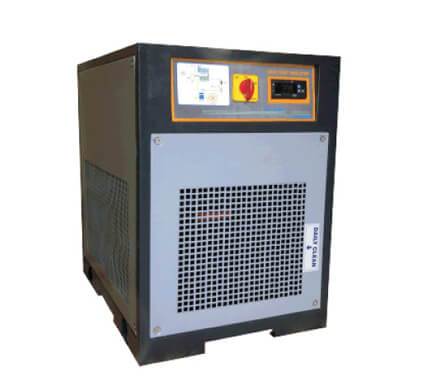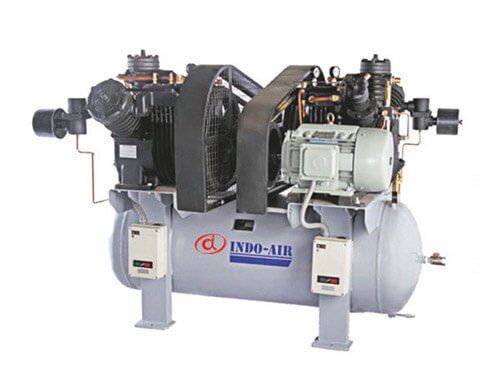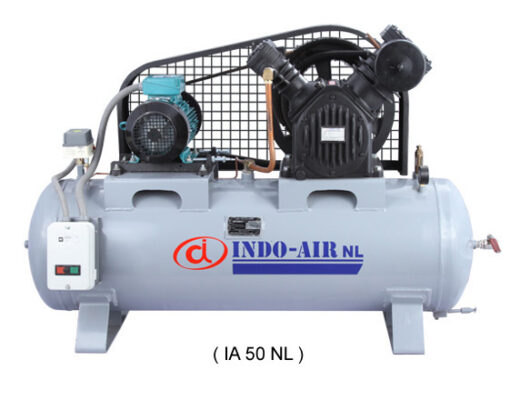An air compressor is an indispensable piece of equipment for the industries, as it is an efficient tool and can manage multiple jobs. If you are using multiple air compressors in different rooms, then it’s a challenging task for you to control compressed air systems. By following local pressure settings, if you are controlling your system, you are wasting a lot of energy. By learning how to manage multiple air compressor systems, you can minimize energy costs and achieve more reliable air pressure. Consider the below article to learn how effectively you can manage multiple compressed air systems if you have purchased them from reputed air compressor manufacturers in India.
Understanding compressor control pressure
Pressure is a crucial parameter in compressed air systems. If you don’t keep the pressure above a certain level, the machines will no longer work properly and thus, your production may hamper. Controlling the pressure is an assiduous job as you need to consider the pressure differential. Take an example of a compressed air system where the air leaving two compressors passes through a filter, a dryer, system piping and then a filter, regulator, and lubricator (FRL) before arriving at the critical end-user.
In a normal cascaded pressure band arrangement, these machines can provide an air pressure of around 100 pounds per square inch (psi) when both compressors are fully loaded. This would change to about 115 psi when the loads are lightest.
When the air moves through each system component, it loses pressure. This means when it reaches the end-user, the pressure is strikingly lower. The pressure needs to be precisely controlled. Real-world conditions make it hard to control the pressure precisely.
How drops in air pressure affect the system?
When the air compressors are loaded, the air pressure drops. Here, we are giving examples of common drops.
4 psi drop in the filter.
6 psi drop in the dryer.
5 psi drop in the piping.
15 psi drop in the FRL.
From the compressor to the critical end-user, the airdrops nearly 30 psi. This issue means that, if the air leaving the compressor was 100 psi, the end-user will only have 70 psi.
Multiple compressor locations
If you are managing multiple air compressors (they are in different rooms), your problems will be even bigger. This is because each compressor experiences various loads and air pressure differentials.
For a dual air compressor setup, compressors in each room need to be managed properly. Using local compressor setpoint adjustment, a wide pressure band is necessary to achieve this.
On the other hand, if the loads vary extensively, you won’t be able to coordinate multiple compressors. It is somehow manageable if compressors could share loads with all units operating at partial loads.
Inefficiencies of part loading
One common approach is to set all compressors at the same pressure so that they can share the load. Though this is an effective solution, the energy penalty is huge.
For example, if you are trying to run your compressor at a 30% load, it may consume anywhere between 60% and 80% of what it would at full load. If you run three compressors at a 30% load, they may consume two times what a single compressor would use at full load.
The right strategy is to keep all of your compressors fully loaded except for one. This one will take the partial load and should have the highest partial load efficiency.
Eliminate pressure differentials
Many compressor systems often experience pressure differentials because they don’t use optimized components. Many parts are used because they fit the standard available sizes used in the plant, not because they are the best components.
You can minimize the pressure differential by upgrading that element accordingly. If you can improve the filter styles, upsize the air dryers and enhance the piping’s capacity, you can then lessen the pressure differential and also can deliver the required air pressure to the end-user.
If you are employing an unplanned strategy to control multiple air compressors, you will experience unnecessary power consumption. You may also meet frequent maintenance issues. If you manage your compressors by using the onboard controllers, this technique could cause problems like overconsumption, inefficient operations, and high pressure.
Factors involved in managing an air compressor control scheme
To ensure that all compressors are aligned, you need to calibrate the pressure transducers perfectly with one another.
Another prime factor is how much of a pressure drop there is from where the compressors discharge the air to the receiver tank.
When signals and differentials are unequal, this may cause too many air compressors to run. This wastes energy and also enhances maintenance intervals.
Another important factor that influences how you control your compressors is the compressor control’s setpoints. If the motor speed controls your compressor, setpoints become target pressure. If you have more than one compressor in local control, your setpoints spread over a broad range. Now, as a result, your first compressor runs at a higher pressure to maintain this control scheme.
This strategy is called a cascade control scheme. This enhances a system’s power consumption resulting from higher pressure. In a cascade control scheme, the compressor that starts last is set to the minimum acceptable pressure.
Benefits of remote connectivity
Irrespective of the type of your compressor, you can apply and link high-quality system controls to monitor and control your compressor systems. Remote web-based controls are available in the market.
Remote communication provides a plethora of benefits. A compressor with no remote connectivity can send an alert or sound if an alarm breaks down during a shift when no experienced staff is there. The plant will halt production and will try to contact an emergency service provider and need to wait for them to come.
Now consider the same situation with a mobile alert notification built into the control system. This immediately notifies the service provider. This feature encourages service providers to assess the issues remotely. They can analyse all the parameters and figure out how the shutdown occurred. So remote connectivity significantly enhances the quality and pace of the response.As an eminent air compressor manufacturer in India, Indoair offers a wide range of compressed air systems for your plants. Apart from that, Indoair also offers maintenance and services to your air compressor systems. Visit our website to know more.




